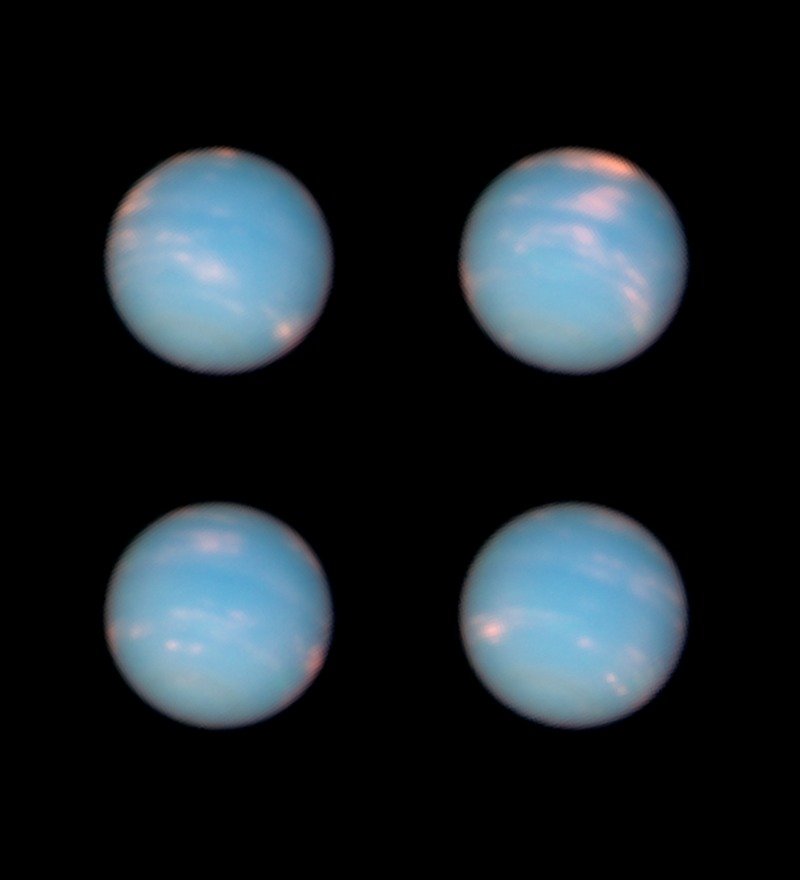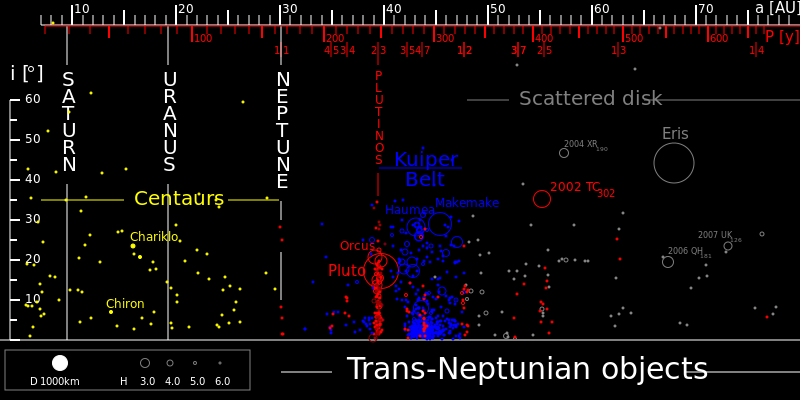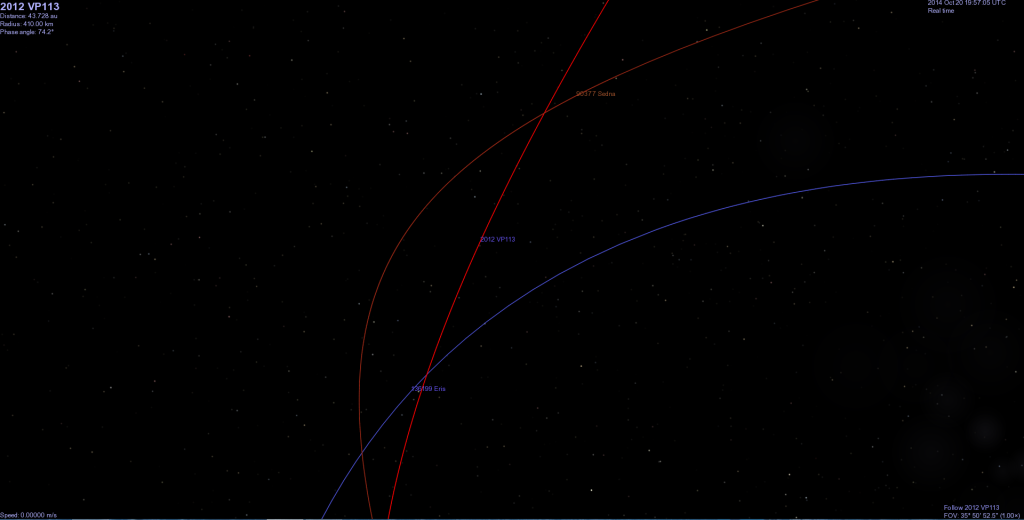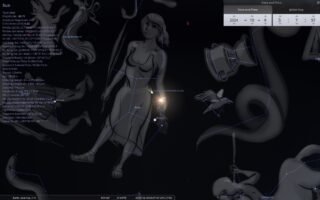Sedna, 2012 VP113, And the Lost Orb Planet X
Astronomers, astrophysicists, astrobiologists, geologists, and other scientists have long looked for a Super Earth as an answer to perturbations in the orbits of the outer Solar System planets. They have looked for an unknown X planet, hence “Planet X.”
As a result of this search the outer Solar System has been expanding its limits to farther reaches.

2012 VP113, Celestia | Rediscovered Astronomy
Early Search For Planet X
After the discovery of Uranus by William Herschel in 1781, astronomers suspected the presence of an unknown yet to be discovered planet. Scientists thought that an X planet would be the cause of perturbations to Uranus orbit. In 1821, through math calculations, Alexis Bouvard demonstrated the influence of another planetary body over Uranus.

Uranus, Keck II
Other astronomers followed up on the work of Bouvard and in 1845 Urbain Le Verrier came to the same conclusion. In the period of 1845 to 1846 both John Couch Adams and Johann Gottfried Galle observed Neptune. Neptune was then credited with the perturbations in the orbit of Uranus.

Neptune, Hubble Space Telescope
Later on, at the beginning of the XX century, Percival Lowell perceived perturbations in Uranus that were not explained by the presence of Neptune at that time. It was assumed a planet X was the cause of Lowell’s calculations. Then in the following years, after the work of Lowell, Clyde Tombaugh discovered Pluto in 1930.
It was assumed for decades that Pluto was the perturber of Uranus [and Neptune].

Pluto and moons, HST
But Pluto turned out to be too small to account for any perturbations to either Uranus or Neptune. It wasn’t until Pluto’s largest moon, Charon, was observed (in 1978 by James W. Christy) that Pluto’s actual size and mass were determined.
If there were any perturbations to Uranus and/or Neptune, they were not caused by Pluto.
Later Search for Planet X
Robert S. Harrington of the U.S. Naval Observatory, continued the search for a planet x that would explain perturbations in the orbits of Uranus and Neptune.
In a research paper entitled, The Location of Planet X, Harrington postulated that the unknown planet could be in the Scorpius or Taurus regions of the sky. Link to PDF
Robert S. Harrington later published a second paper in 1991 entitled, The Search for Planet X, that explained the state of his search in the southern skies.
Harrington continued with his search up to the time of his passing in 1993. Link to PDF
R.S. Gomes and Sylvio Ferraz-Mello also based their search for Planet X on the perturbations of Uranus and Neptune.
This particular theory for the existence of Planet X was discarded due additional calculations that attributed the perturbations proposed by Lowell, Harrington, Gomes, and others to Neptune or to simple “miscalculations”.
However, new theories were proposed in the later 1990s and at the turn of the century.


Trans-Neptunian Objects up to 80 AU
Planet X And the Comet Theories
Richard A. Müller postulated the existence of a stellar [or sub-stellar] companion to the sun. Müller’s Nemesis theory aimed at explaining periodic mass extinctions on Earth by way of Oort cloud comets. This red dwarf would be located outside the Oort cloud.
Despite Müller’s proposal, new geological research by Melott and Bambach (in 2010 and 2012) would determine that there existed a significant difference in the period of extinctions by millions of years contrasting the periodicity proposed by Müller.
Update October 2015
However, a newer study by Michael R. Rampino (in 2014) suggest the periodicity in mass extinctions on Earth could be much shorter to around 30 million years. Rampino attributes this much shorter period to the Galactic tidal forces perturbing the Oort cloud comets when the sun passes through the galactic disc.
Others attributed the periodic extinctions to statistical error or argued that no astronomical observations showed the presence of a stellar companion to the sun.
Also in the 1990s, John Matese, Daniel Whitmire, and Patrick Whitman came up with a theoretical brown dwarf, Tyche. Tyche would also explain the disruption of non-periodic comets from the Oort cloud.
However, other astronomers have recentlty looked for Tyche by analyzing IRAS and WISE surveys. Consequently, NASA’s staff has stated that a large “Saturn-like” or “Jupiter-like” object was not found in the astronomical surveys WISE or AII WISE.
Yet, new discoveries in the next century only deepened the search for an unknown Planet X.

Y Class Brown Dwarf, JPL – Artist
The Search for Planet X In the New Century
Briefly after the turn of the century, in the new millenium, something extraordinary occurred. Michael E. Brown, Chad Trujillo, and D. Rabinowits announced the discovery of Sedna in 2003. Sedna would prove to be a key player in the search for Planet X and new minor planets.
Sedna is small, roughly 1000 km. But Sedna’s orbit takes it much farther away than Pluto at 76 Astronomical Units perihelion [closest approach to the sun] and 940 Astronomical Units aphelion [farthest point from the sun]. Astronomers could not explain Sedna’s presence in that part of the Solar System, something must have acted as a perturber beyond Pluto; probably an unknown massive body or Planet X.
The planetoid Sedna turned out to be of great importance because of its key role to point to a probable massive body perturbing the outer Solar System.

Eris plus Sedna and 2012 VP113 orbits near closest approach to the sun
Michael Brown announced the discovery of yet another body in 2005, Eris.
Eris is bigger than Pluto and would prompt the entire reconsideration of what a planet is by the IAU in 2006 and a new type of planet, the dwarf planet. Eris and Pluto would ultimately both be renamed dwarf planets.
Neither Eris size or its location in the Kuiper belt explains Sedna’s orbit or its very presence towards the Oort cloud. Scientists could not explain why Sedna was there. Astronomical records started to point to a massive body as the perturber, Planet X had to be there.
Besides their Tyche theory, and before it [Tyche] was put down by some opposing astronomers, Matese and Whitmire came up with a new theory in 2006.
John Matese, Daniel Whitmire, and Jack Lissauer pointed out that a wide orbit sub-stellar planetary mass body was the perturber of Sedna to have put it into such an elongated orbit [76 Astronomical Units to 940 Astronomical Units].
Their massive body would be around 800 Astronomical Units away and get closer to the sun at 76+ Astronomical Units to have taken Sedna out of the Kuiper belt or scattered disk region to its current aphelion of 940 Astronomical Units.
Matese and Whitmire followed the work of Gomes (of 2005) with resonant mechanisms and objects with orbits at 40 Astronomical Units to 260 Astronomical Units. They also looked at the research of Morbidelli and Levison (of 2004) of a low mass star or brown dwarf at 800 Astronomical Units that could act as a perturber, a planet x.
Matese, Whitmire, and Lissauer explained that although they were looking for a sub-stellar body, their model works as well for a body the mass of Neptune and less than 2000 Astronomical Units (aphelion) away.
Such an object could not have been detected by the WISE surveys.

Sedna, Eris, and 2012 VP113 Orbits – Rediscovered Astronomy
Current Planet X Research
The discovery of 2012 VP113 in early 2014 by Scott Sheppard and Chad Trujillo supports and extends the current theories that propose the presence of another planet in the outer Solar System. 2012 VP113 [nicknamed Biden] lies at 80 Astronomical Units perihelion and 445 Astronomical Units aphelion.
Sheppard and Trujillo think a planet, a massive Earth, may be out there and expressed WISE / All WISE is not a suitable survey to look for a body up to 10 times the size of Earth and less massive than Saturn.
It did not take long for astronomers to propose a new theory about Planet X.
Few months after the discovery of 2012 VP113 was announced, Carlos De La Fuente and Raúl De La Fuente presented their new Planet X theory (in June 2014) in a paper entitled, Extreme Trans-Neptunian Objects And the Kozai Mechanism: Signalling the Presence of Trans-Plutonian Planets.
In that first paper (of June 2014), De La Fuente & De La Fuente, proposed the existence of a “Super Earth” at 200 Astronomical Units. This massive Earth could explain the presence of Sedna and objects like it. They analyzed the orbits of 13 objects with the Kozai effect model.
The researchers think there may be two of these Super Earths, one at 200 Astronomical Units and another at 250 Astronomical Units in a 3 to 2 orbital resonance with each other.

The Orbits of Planets and Minor Planets in our Solar System, Celestia
Their second paper of October 2014 [not January 2015] entitled, Flippping Minor Bodies: What Comet 96P/Machholz 1 Can Tell Us About the Orbital Evolution of Trans-Neptunian Objects… supports their research paper of June 2014. Link to PDF
Despite the multiple theories favoring the planet, some astronomy websites resisted to admit that Planet X research continues. It has never been absent from scholarly work.
Some of them cited the work of Michael Brown (co-discoverer of Sedna and Eris), but do not mention the work of multiple other astronomers that have proposed theory after theory favoring Planet X.
For years, Michael Brown refused to say that a massive planet may exist out there. He has been forced to admit there is “something” else that had to act as a perturber. He did say that there must be more planetoids to be discovered and maybe, only maybe, one more planet about the mass of Earth. {link to PDF}
Credit to whom credit is due, Michael Brown will go in History records for the discovery of Sedna and Eris, but he is not the proponent of these new theories and he missed the presence of 2012 VP113.

2012 VP113 – Biden
The search for a massive planet [from 2 – 10 Earth masses] has never stopped regardless of the poor research some Space/Astronomy news websites exhibit when making editorial decisions. They will only publish after the NASA News website or newswire services, but the work of some of the astronomers is only found through university databases and has not appeared on [NASA] News or newswire services.
Other theories might as well explain the presence of Sedna and 2012 VP113 [including Brown’s own theories – and his newer position about Planet X with his Planet 9 research along Konstantin Batygin – Evidence for a Distant Giant Planet in the Solar System ]. But that is not to say Planet X has not been researched by scholars or that only new age book sellers write about it.
Update Fabruary 2022
Despite constant attempts from rival astronomers trying to constraint the search to the Kuiper Belt and smaller bodies like Eris or a a body twice the mass of Mars at or around 60 Astronomical Units, Carlos De La Fuente and Raul De La Fuente recently found that there is evidence for the presence of a body or more than one large planet farther than 150 A.U. or 339 A.U.
Written by J.J. Del Mar – First Published in January 2015
Visit Rediscovered Astronomy Planet Page to know more about our Solar System.
Don’t want to read all of this? Visit our YouTube channel our listen to our podcast.



